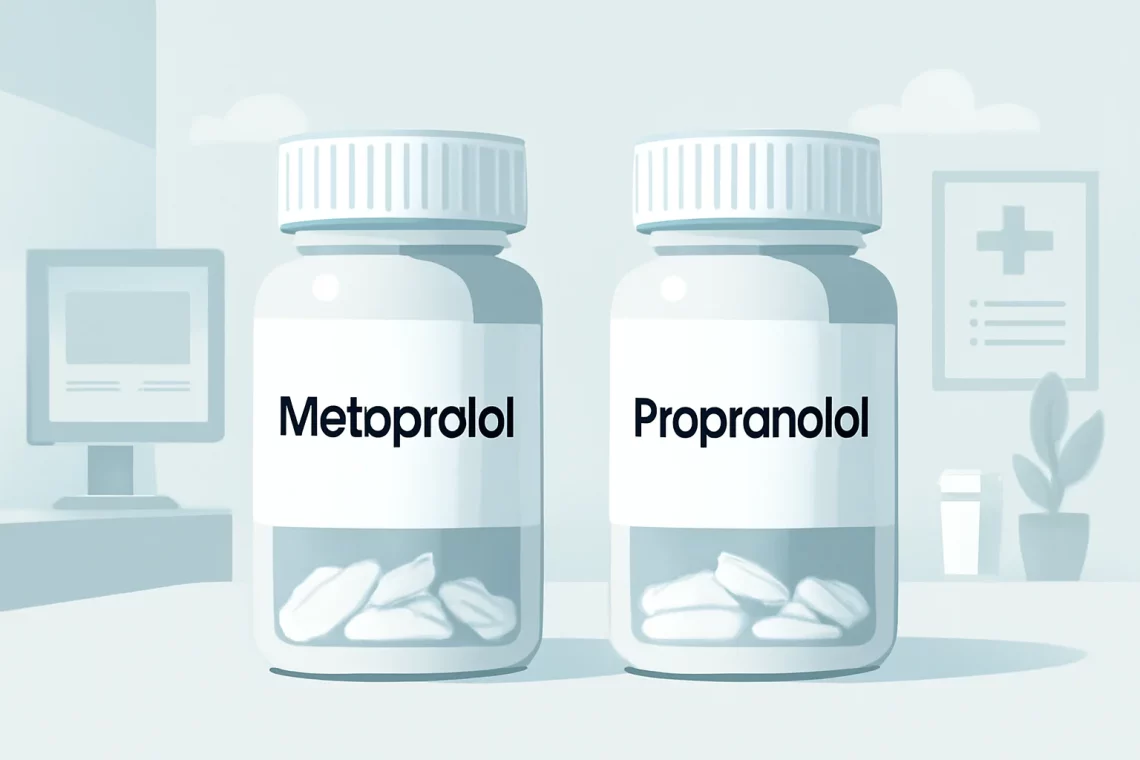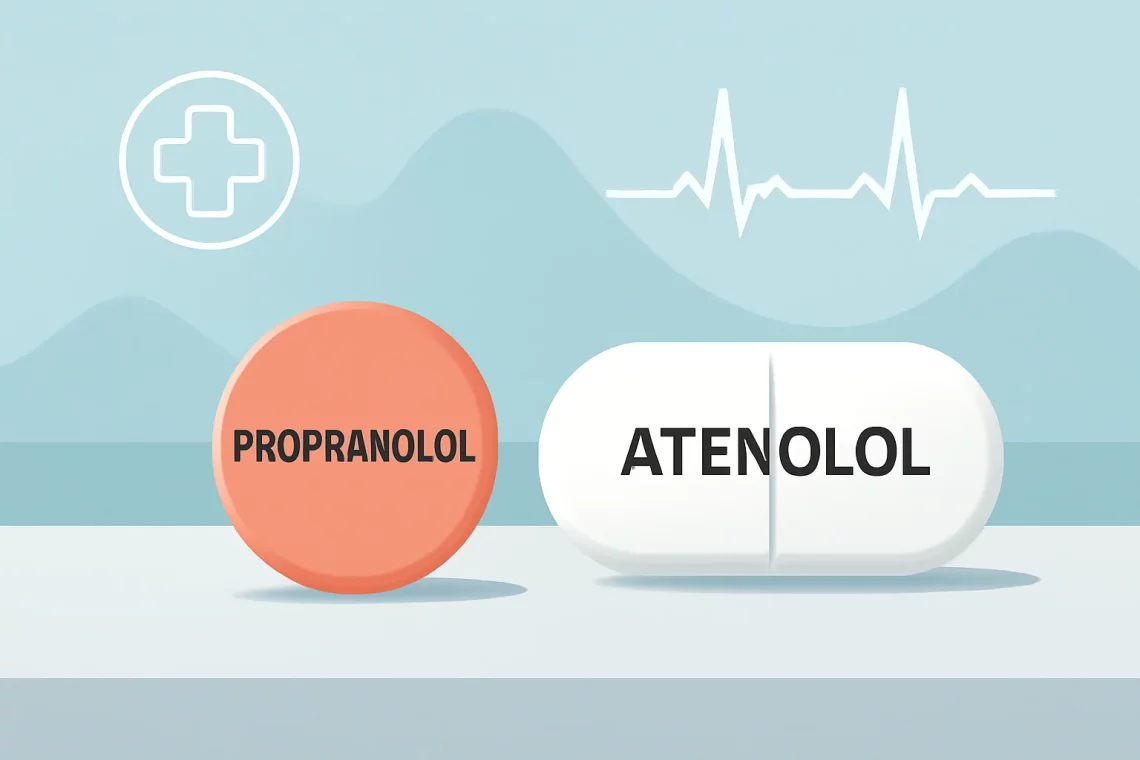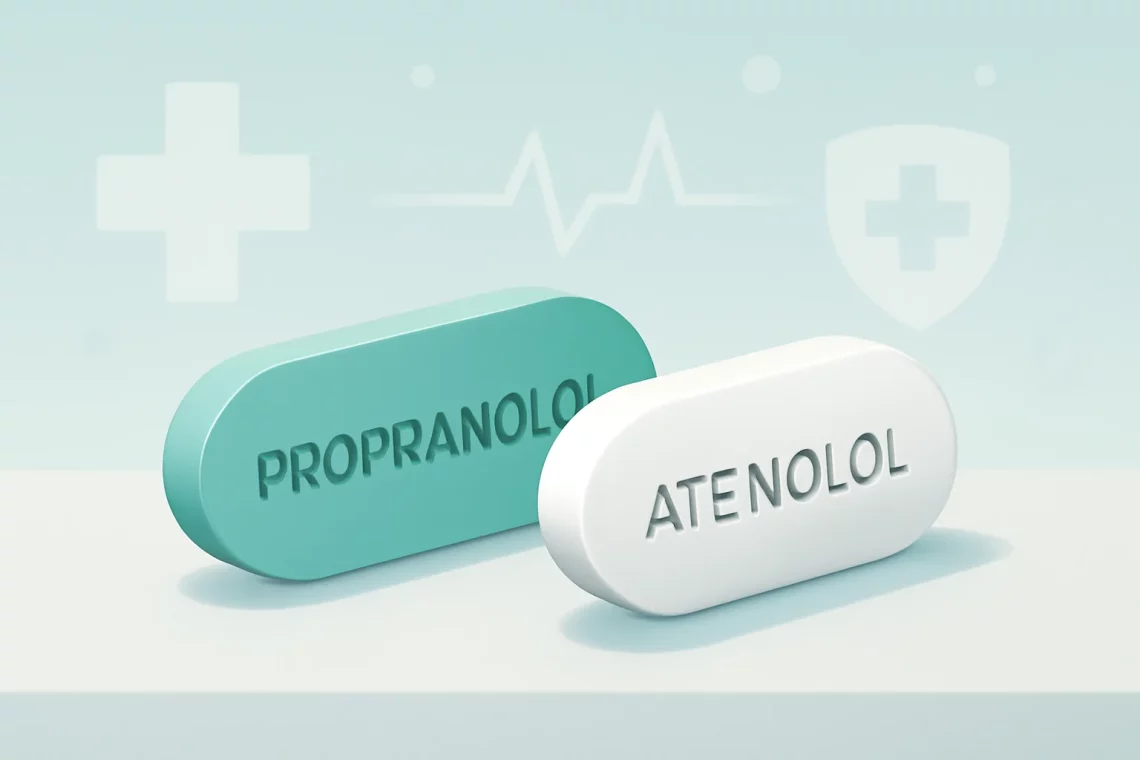-
Metoprolol vs Propranolol: Key Differences and Uses Explained
Metoprolol and propranolol are two widely prescribed medications belonging to the class of drugs known as beta-blockers. These medications are primarily used to manage various cardiovascular conditions, such as hypertension, angina, and arrhythmias. However, their mechanisms of action, therapeutic applications, and side effect profiles differ significantly, making them suitable for different patient needs. Understanding these differences is crucial for both healthcare professionals and patients, as it can influence treatment efficacy and safety. Beta-blockers work by blocking the effects of adrenaline on beta-adrenergic receptors, leading to a decrease in heart rate and blood pressure. This class of drugs is beneficial not only for heart-related issues but also for other conditions such…
-
Propranolol vs Atenolol: Which Beta-Blocker Is Right for You?
Propranolol and Atenolol are two widely prescribed medications that belong to the class of drugs known as beta-blockers. These medications are primarily used to manage various cardiovascular conditions, such as hypertension, angina, and arrhythmias. They can also be effective in treating other conditions, including anxiety and migraine prevention. Both drugs work by inhibiting the effects of adrenaline on the body’s beta receptors, which leads to a decrease in heart rate and blood pressure. Despite their similarities, Propranolol and Atenolol possess distinct pharmacological properties and clinical applications that can influence a physician’s choice of treatment. Understanding these differences is essential for patients and healthcare providers alike, as it can significantly impact…
-
Propranolol vs Atenolol Which Beta Blocker is Right for You
Propranolol and atenolol are both medications belonging to a class known as beta-blockers. These drugs are commonly prescribed for various cardiovascular conditions, including hypertension, angina, and arrhythmias. Beyond their primary uses, beta-blockers have gained attention for their effectiveness in managing anxiety and migraine prophylaxis. As they work by blocking the effects of adrenaline on the beta-adrenergic receptors, they can significantly reduce heart rate and lower blood pressure, leading to improved overall cardiovascular health. Despite their similarities, propranolol and atenolol differ in their specific mechanisms of action, side effects, and therapeutic applications. Understanding these differences can help patients and healthcare providers make informed decisions about which medication is best suited for…











